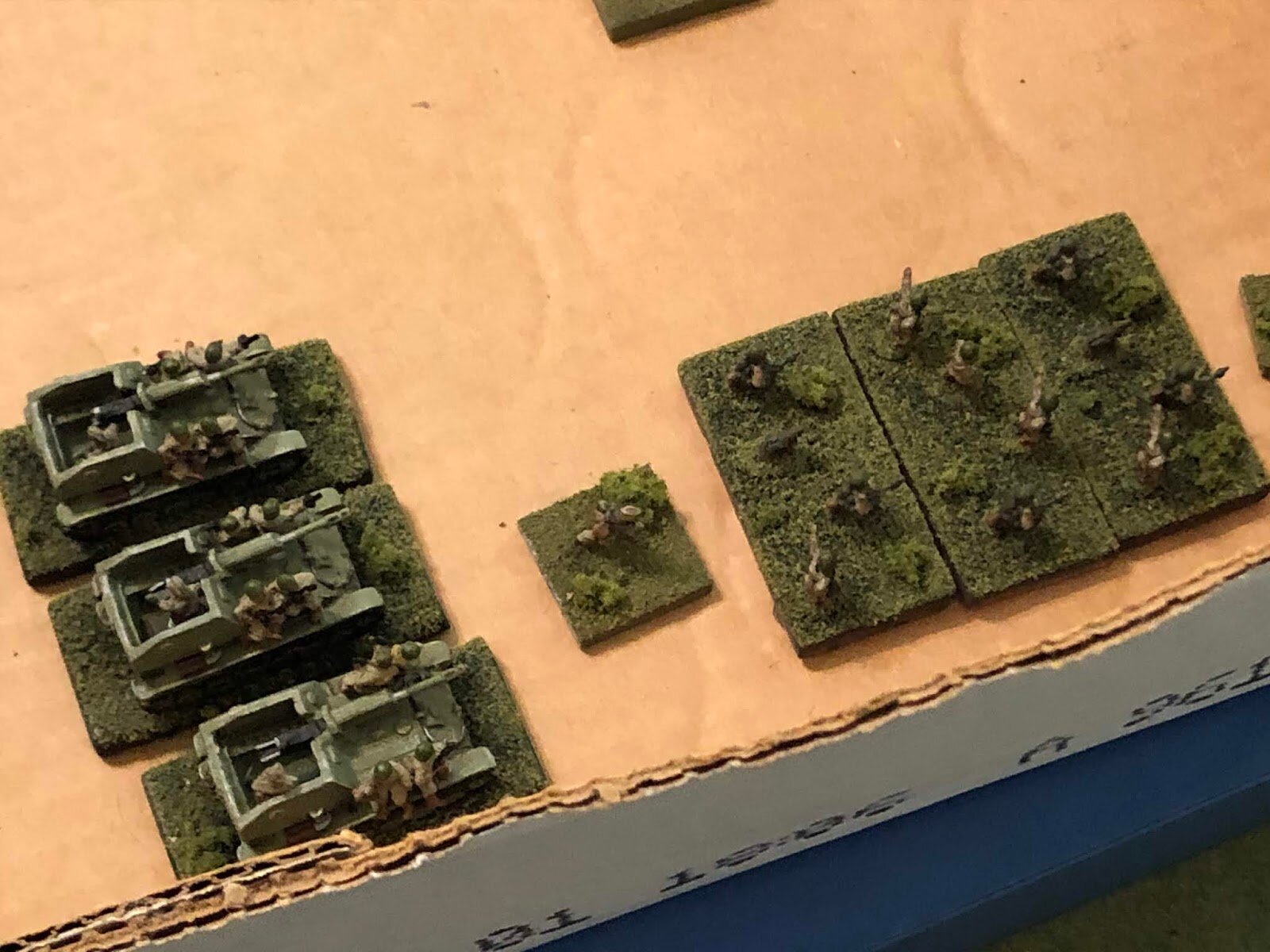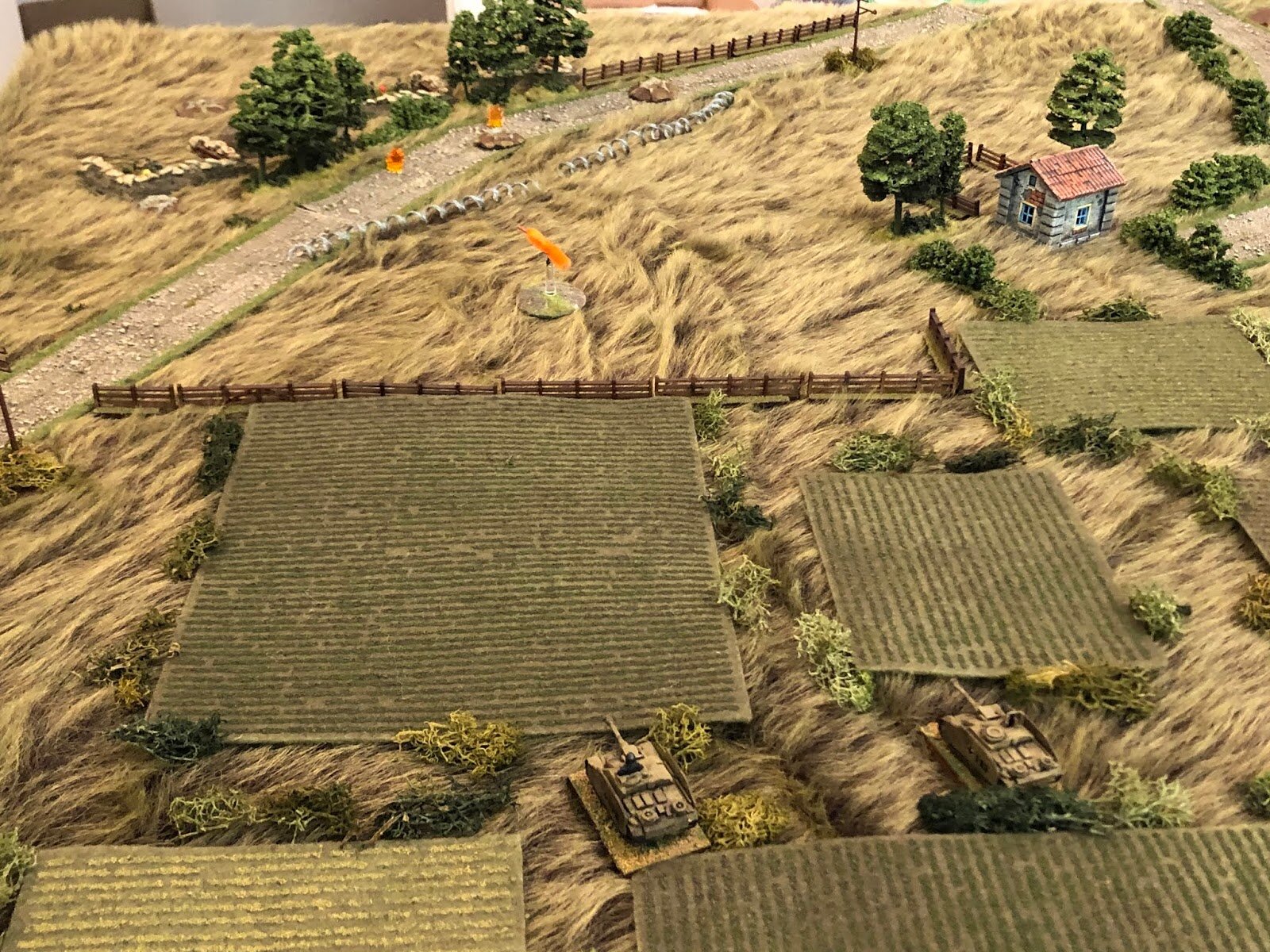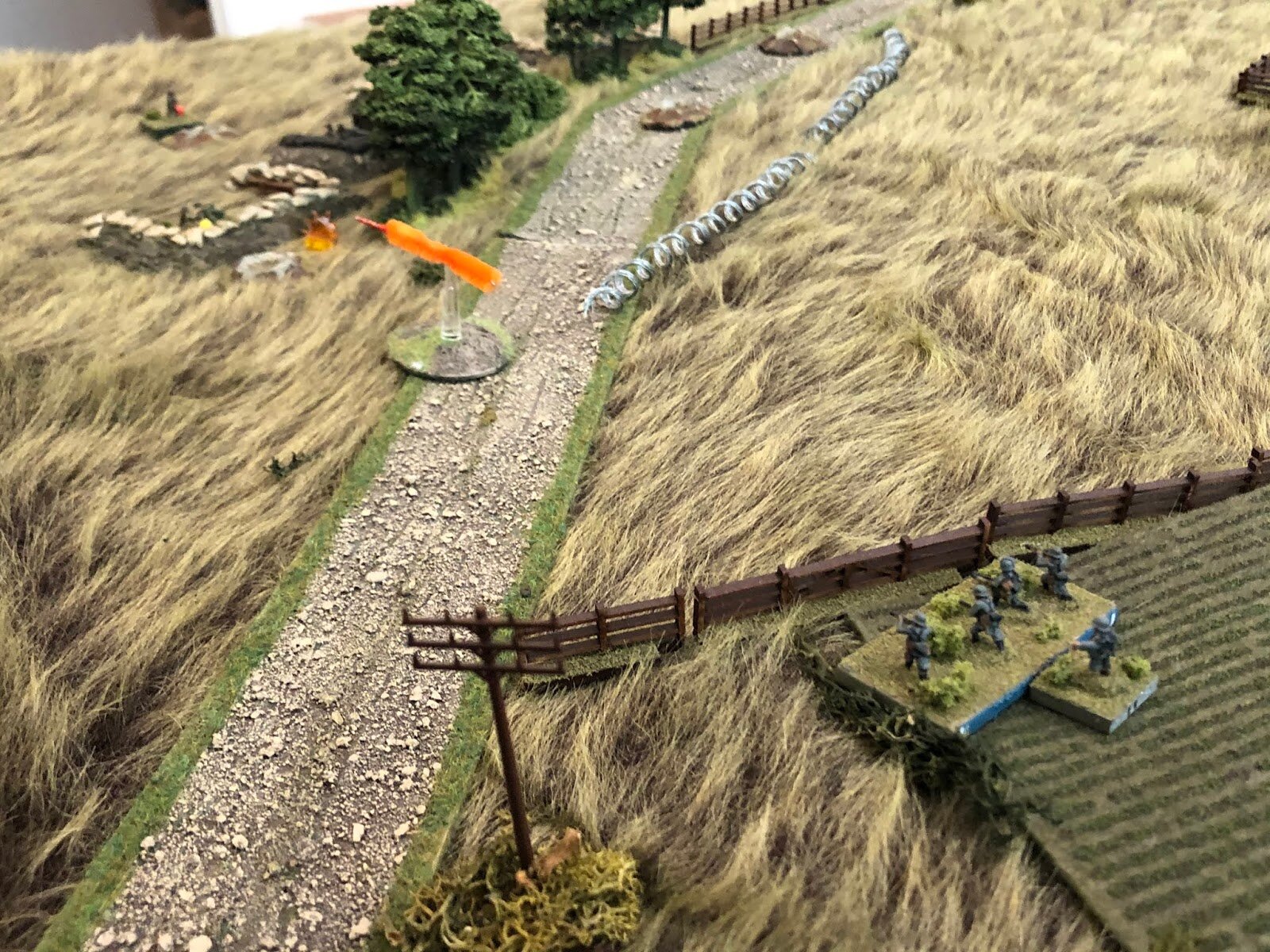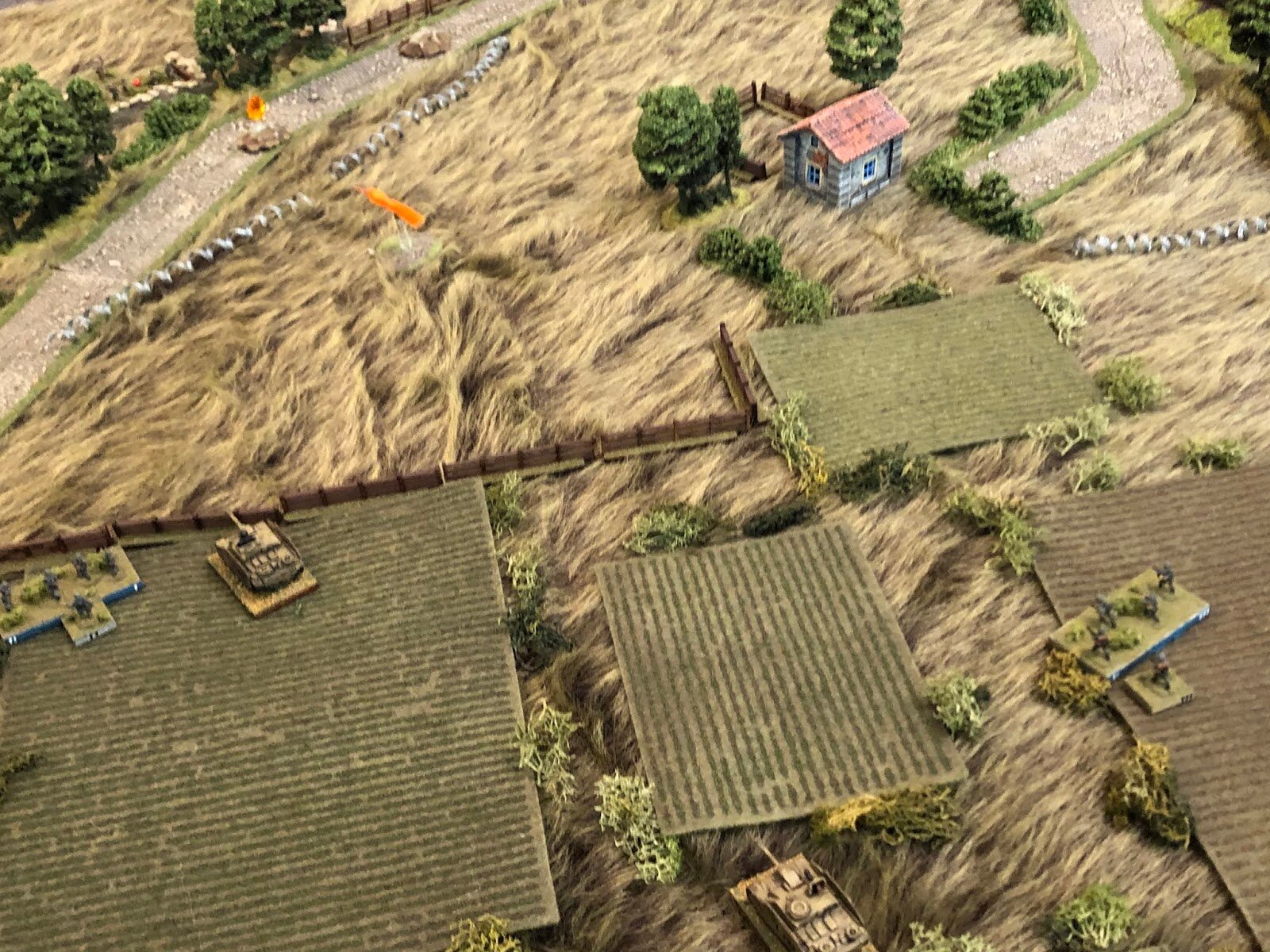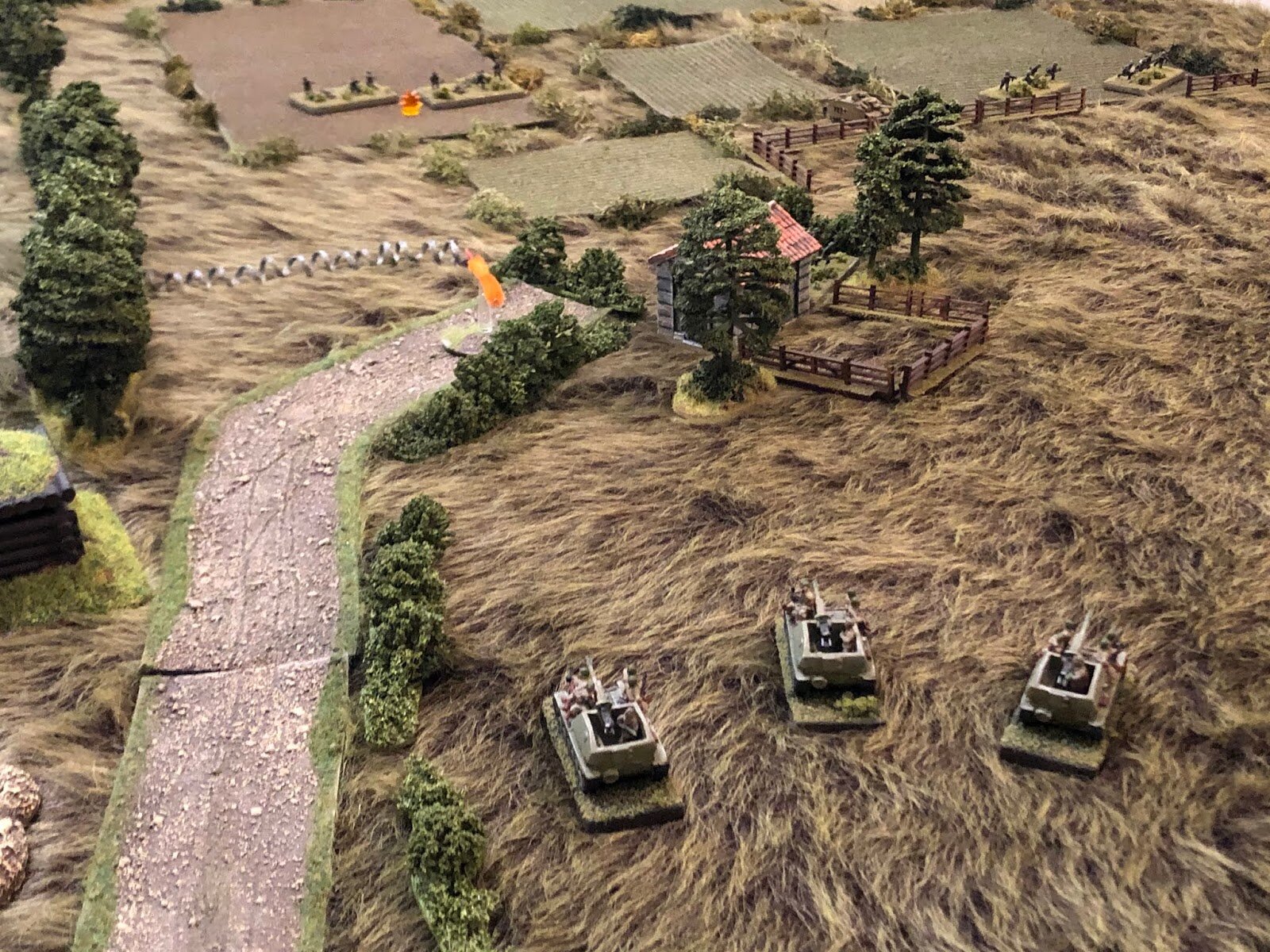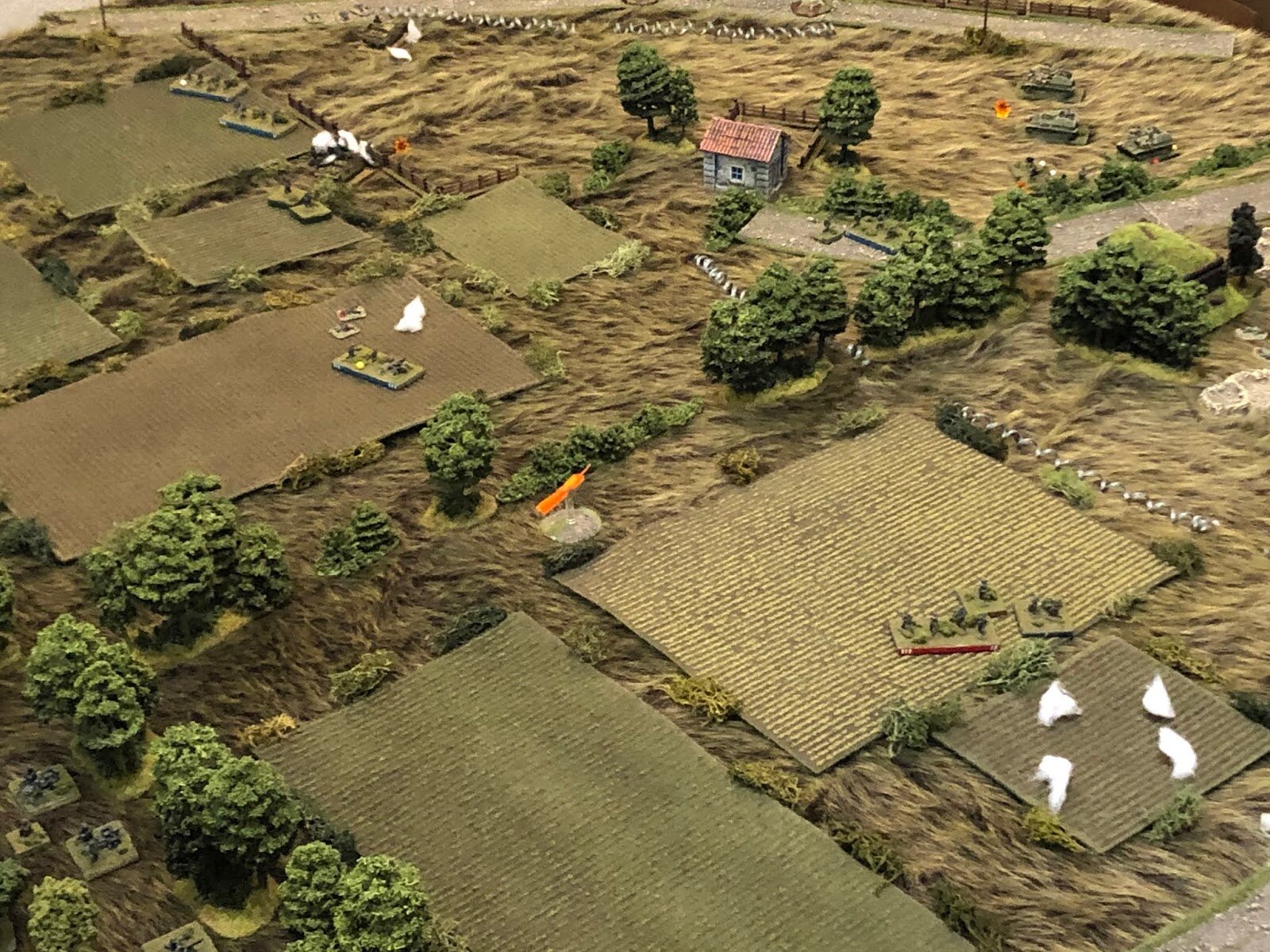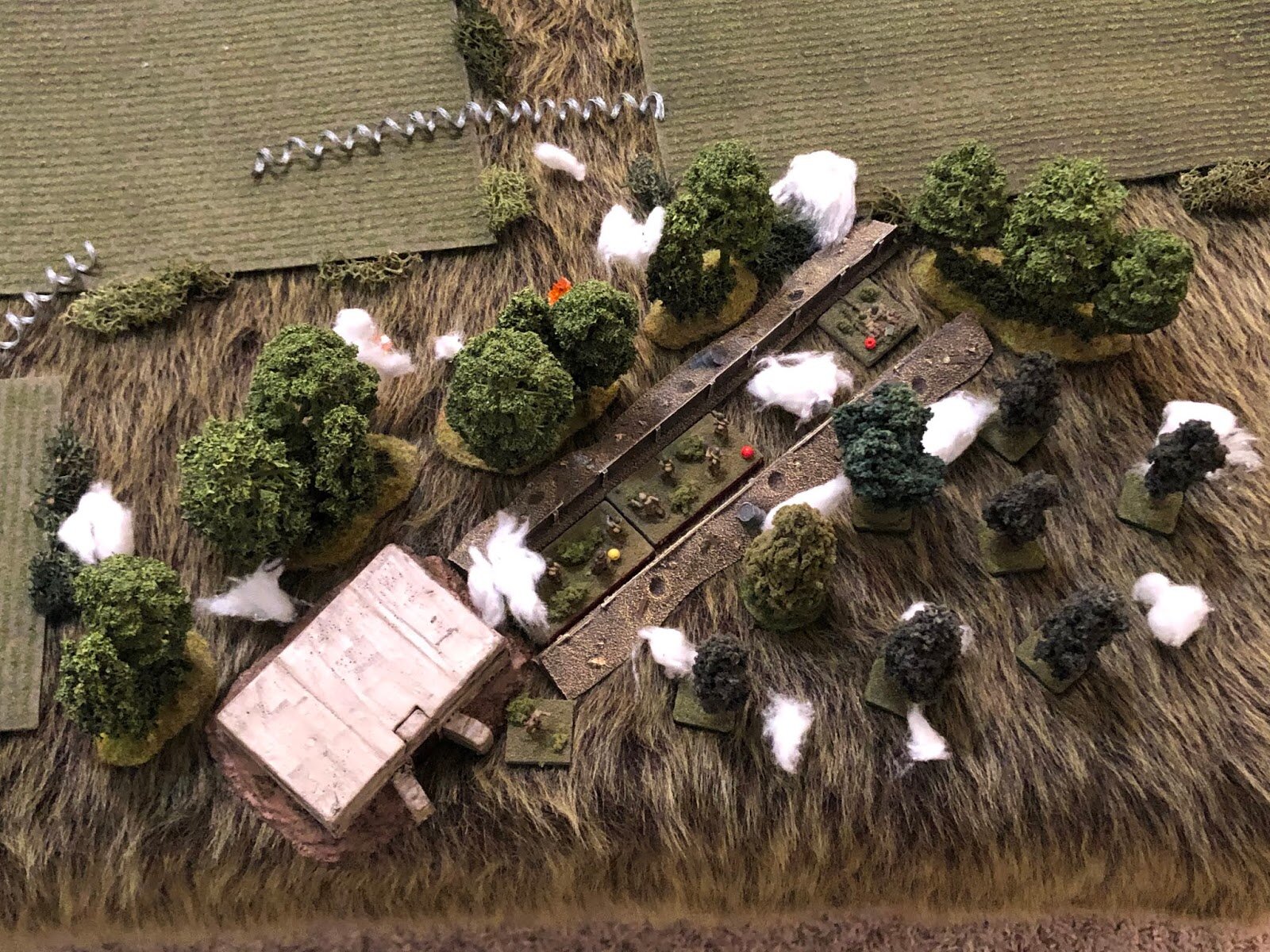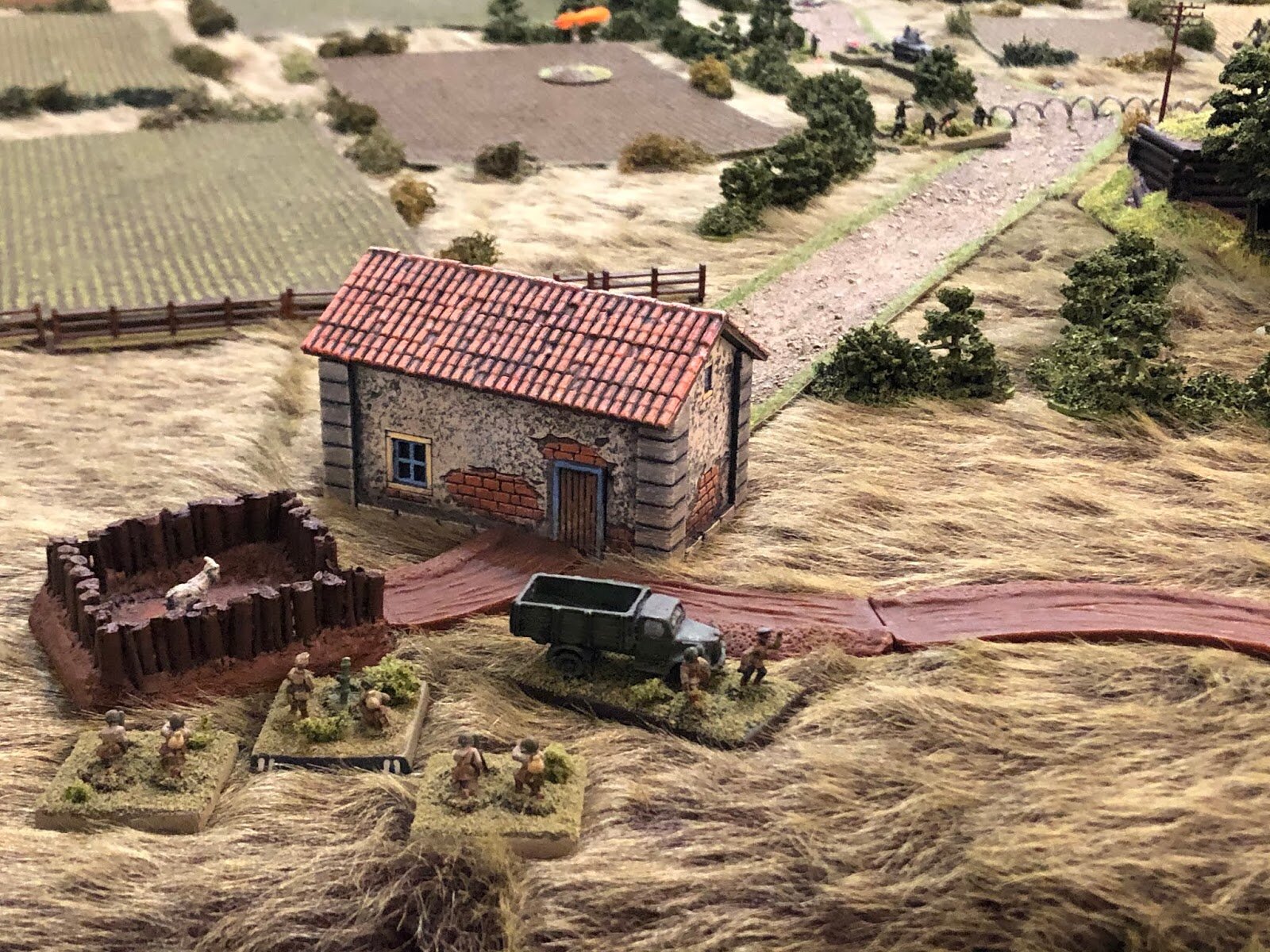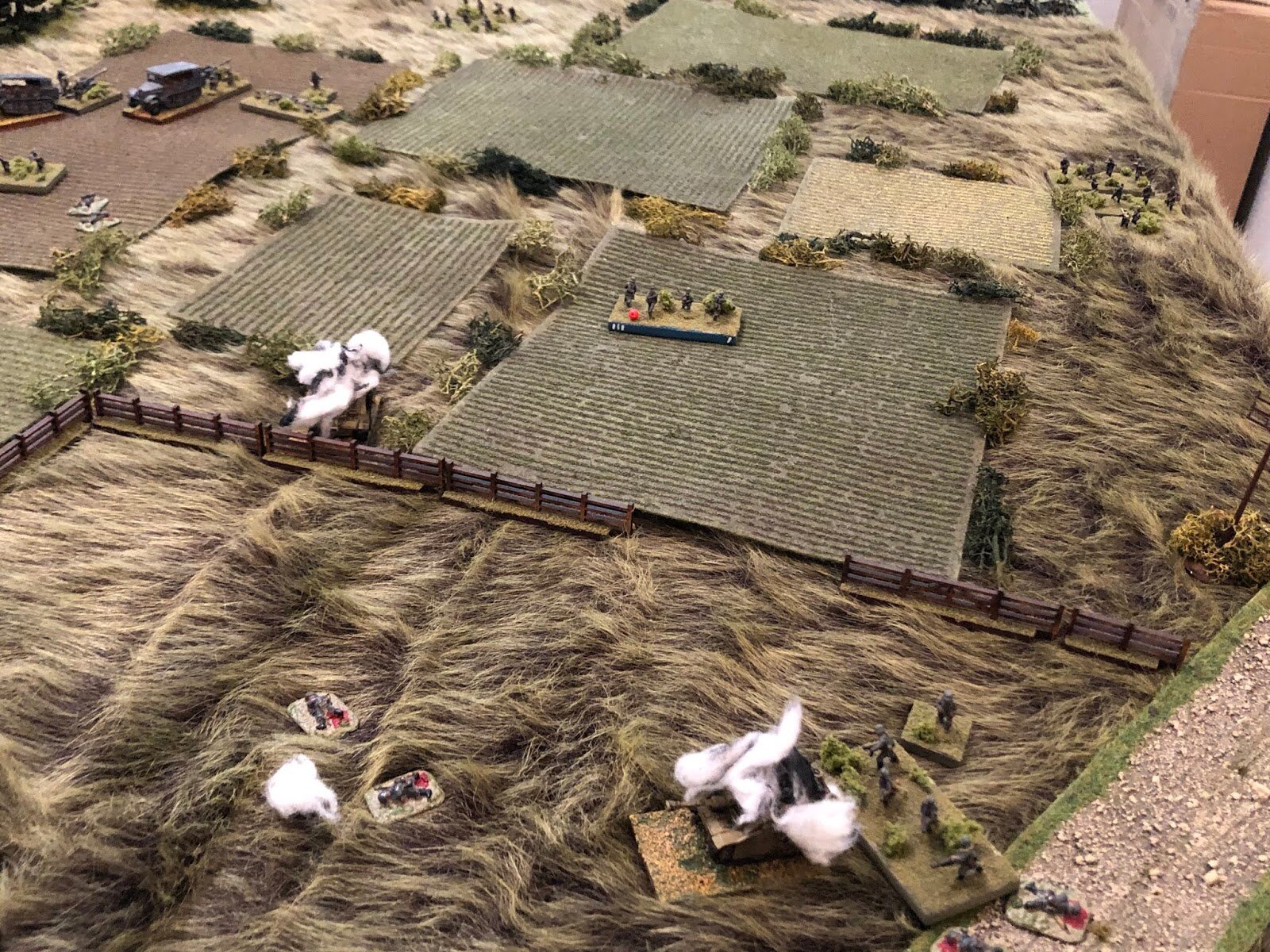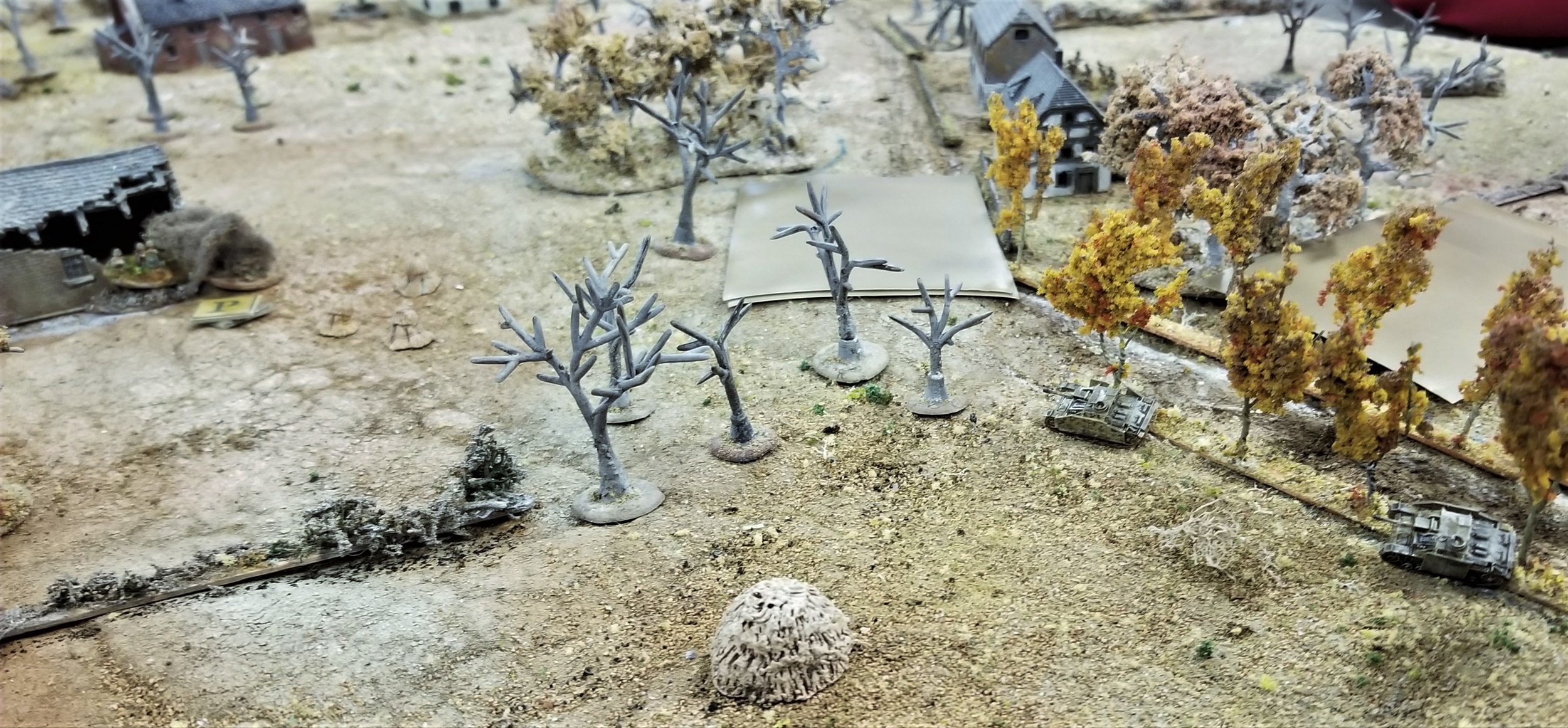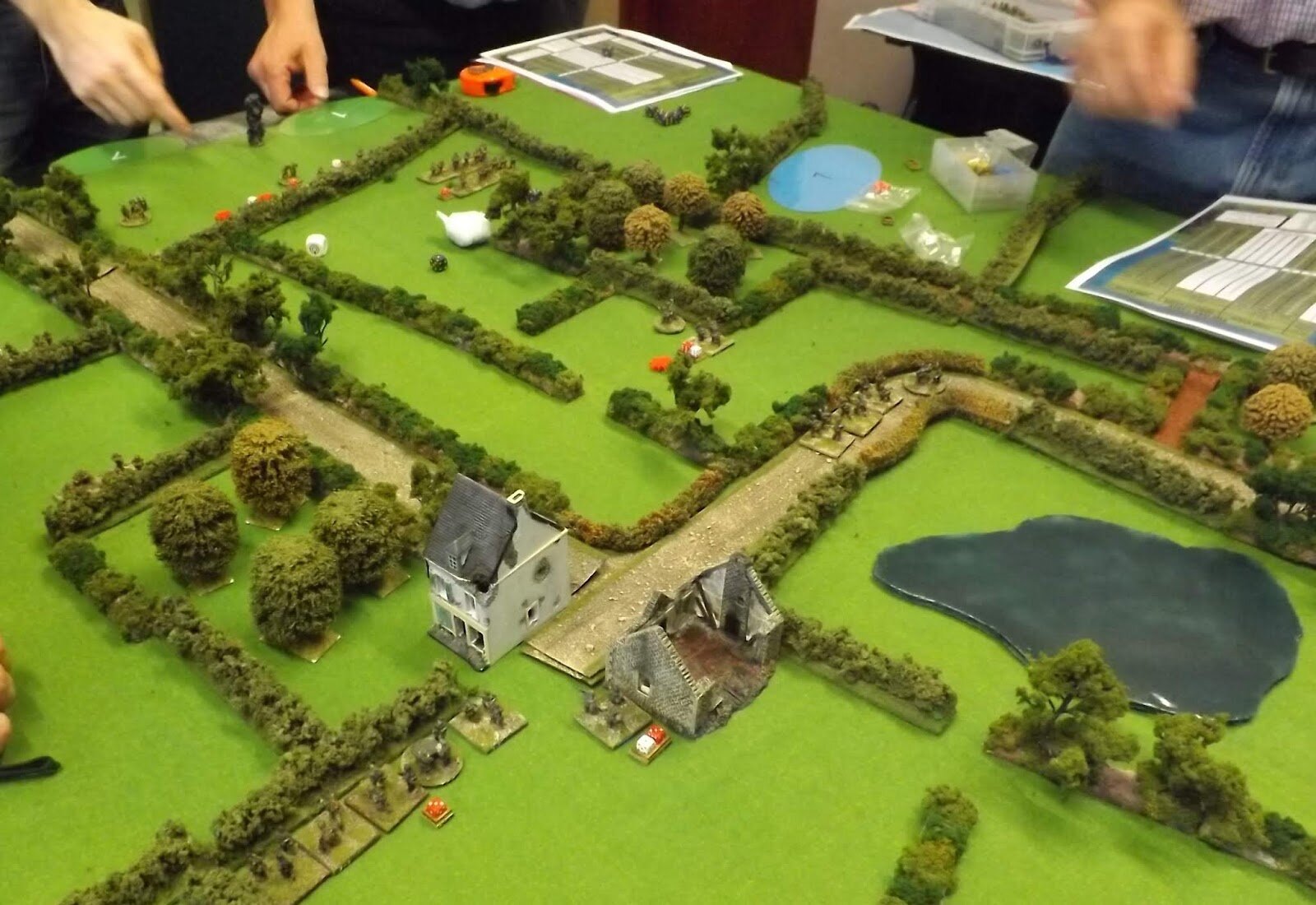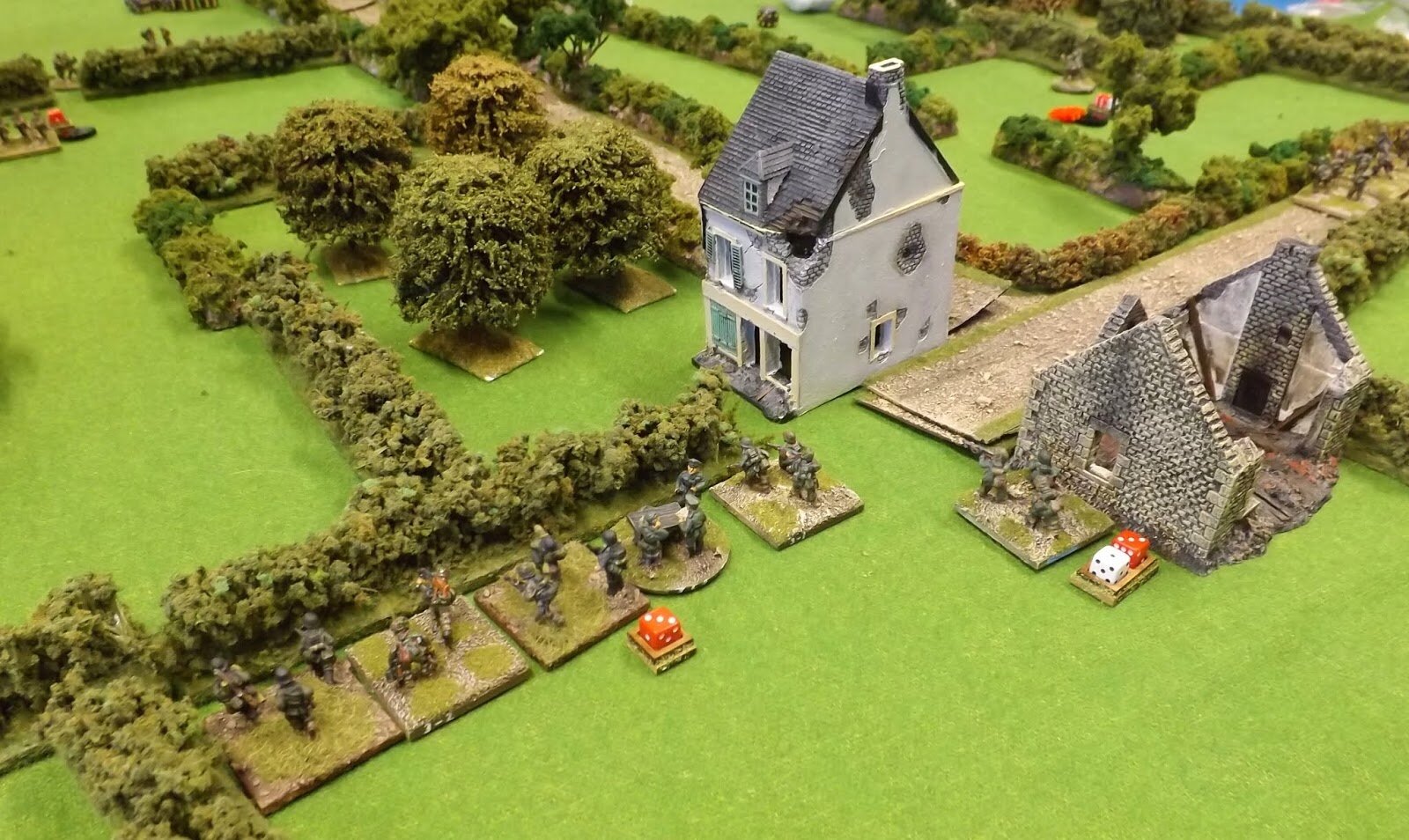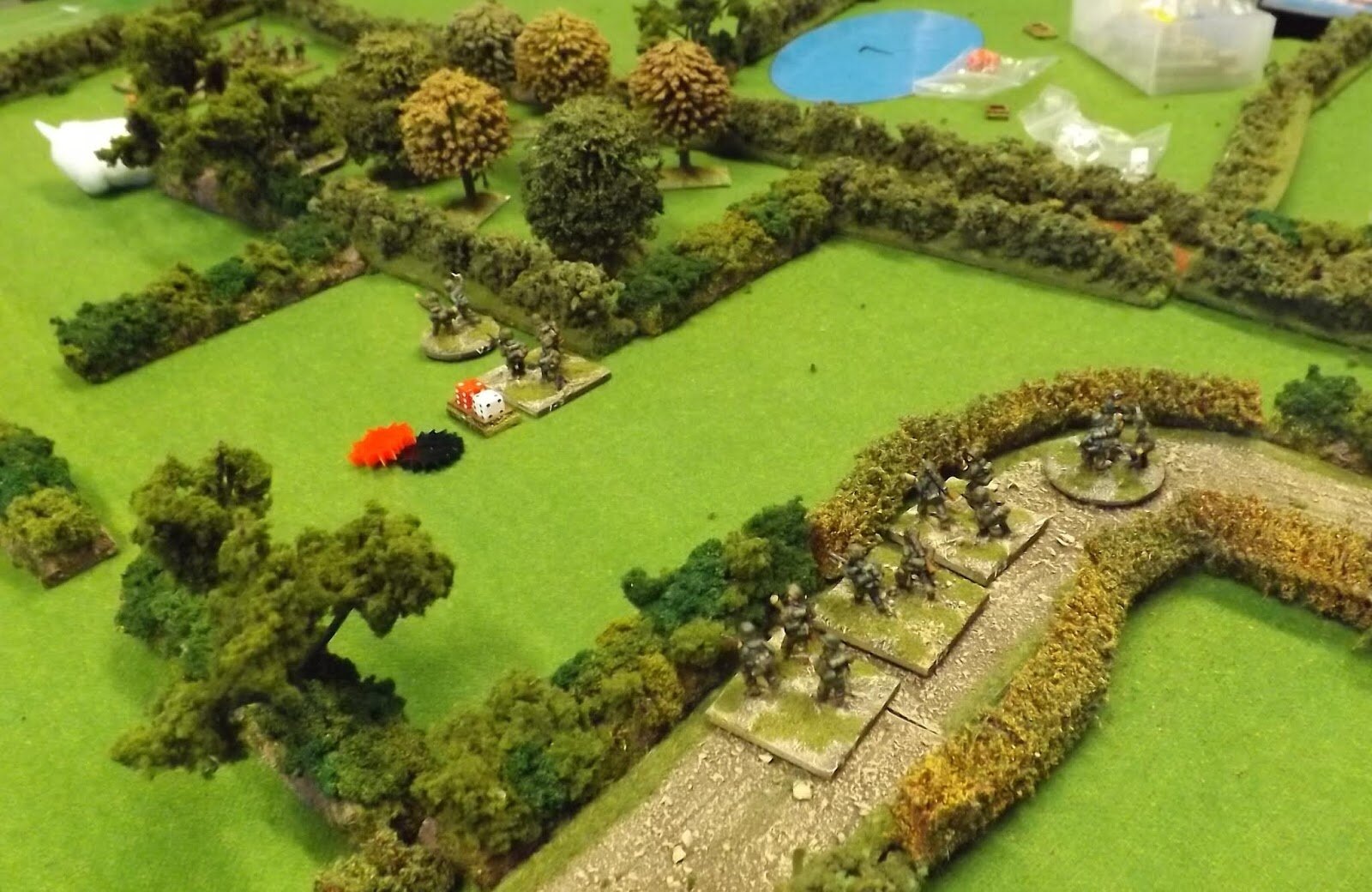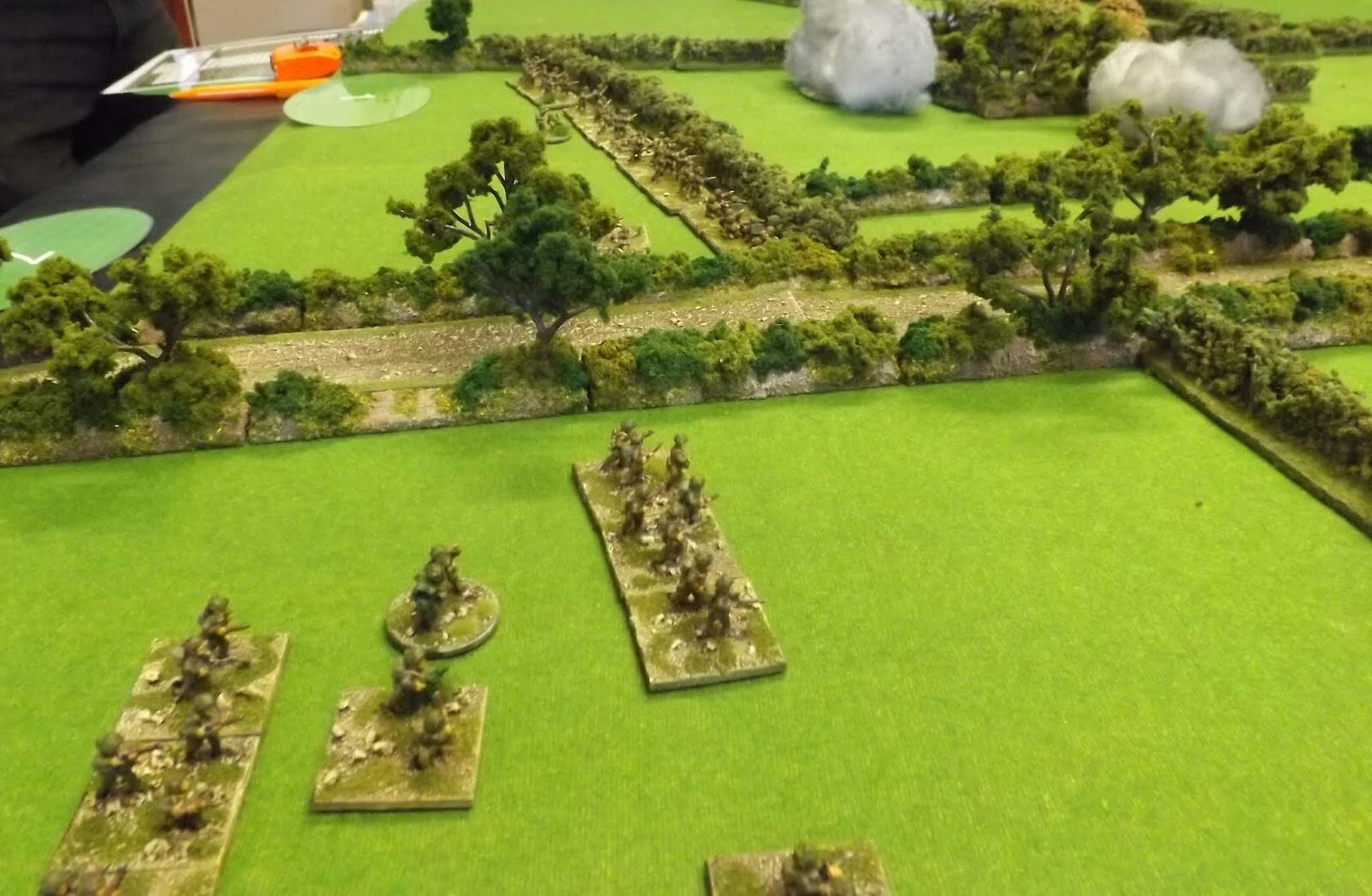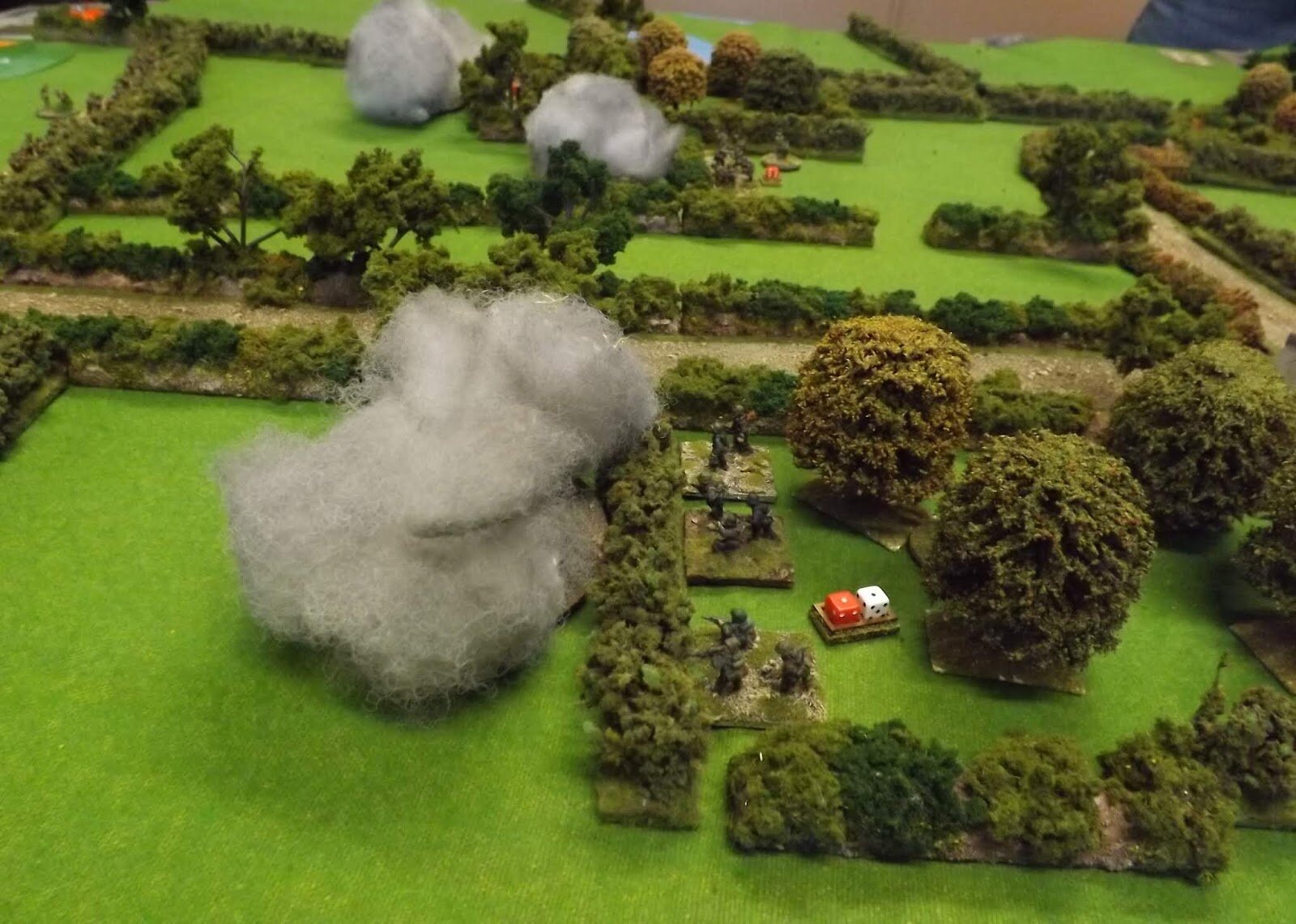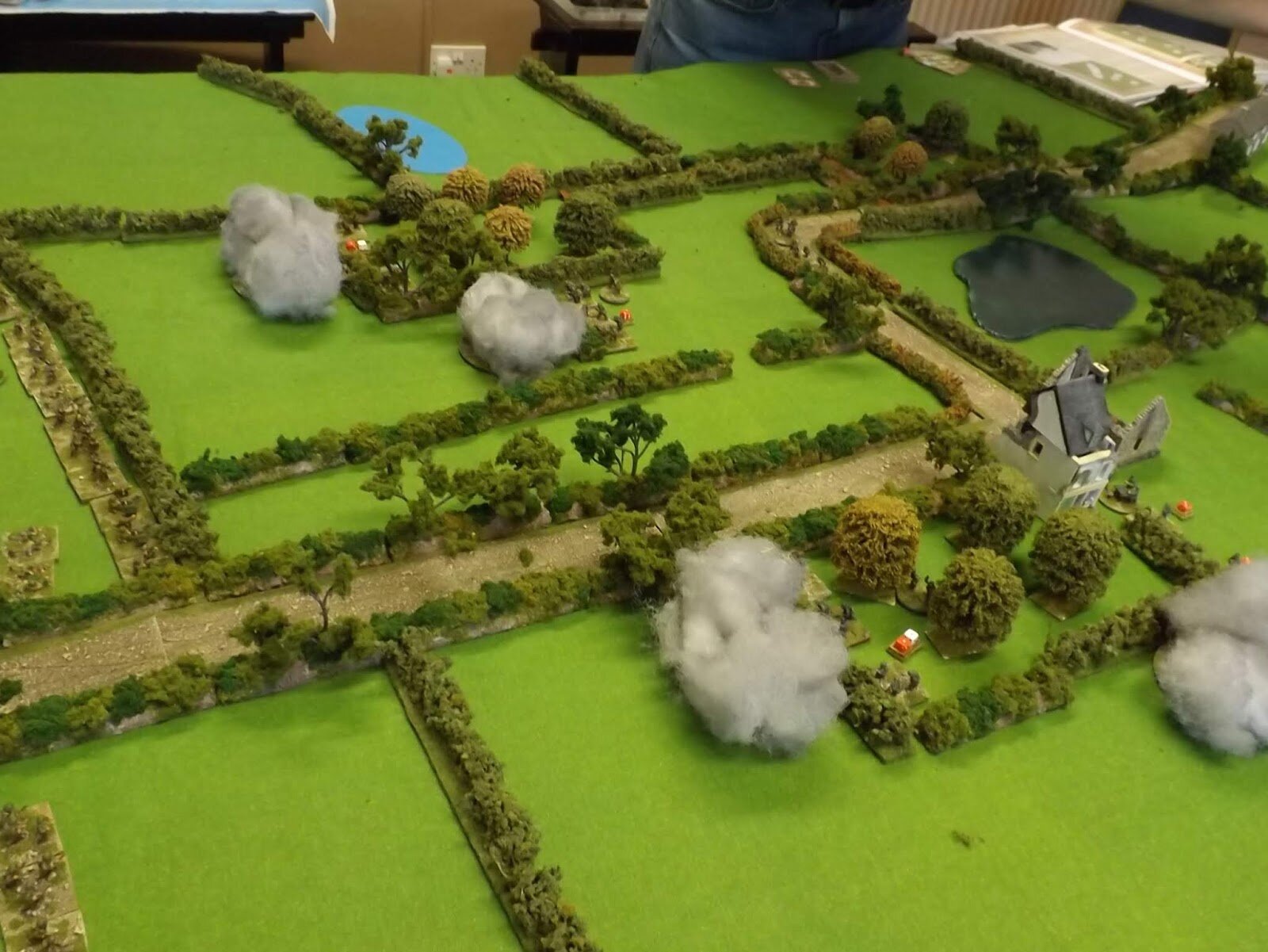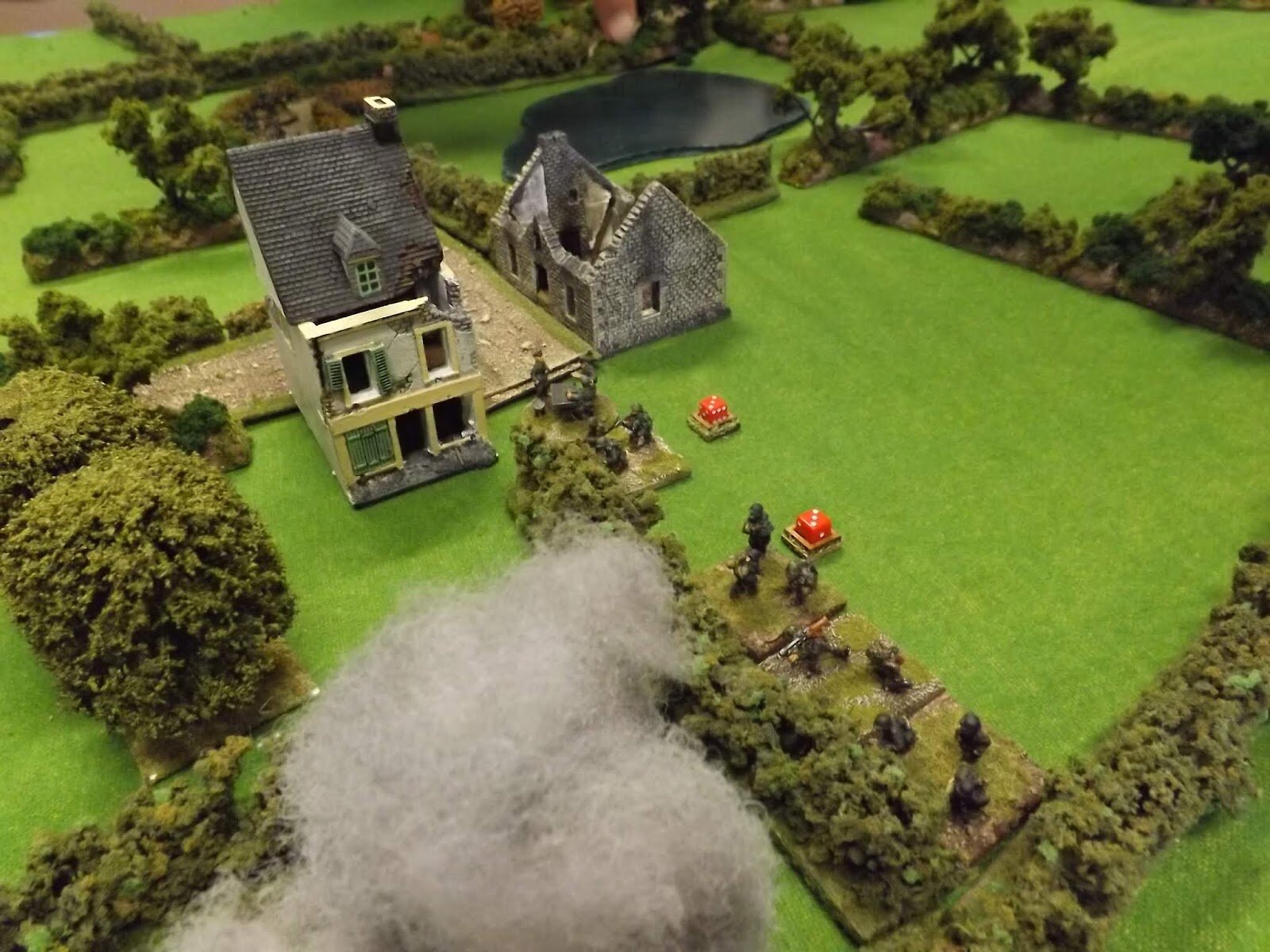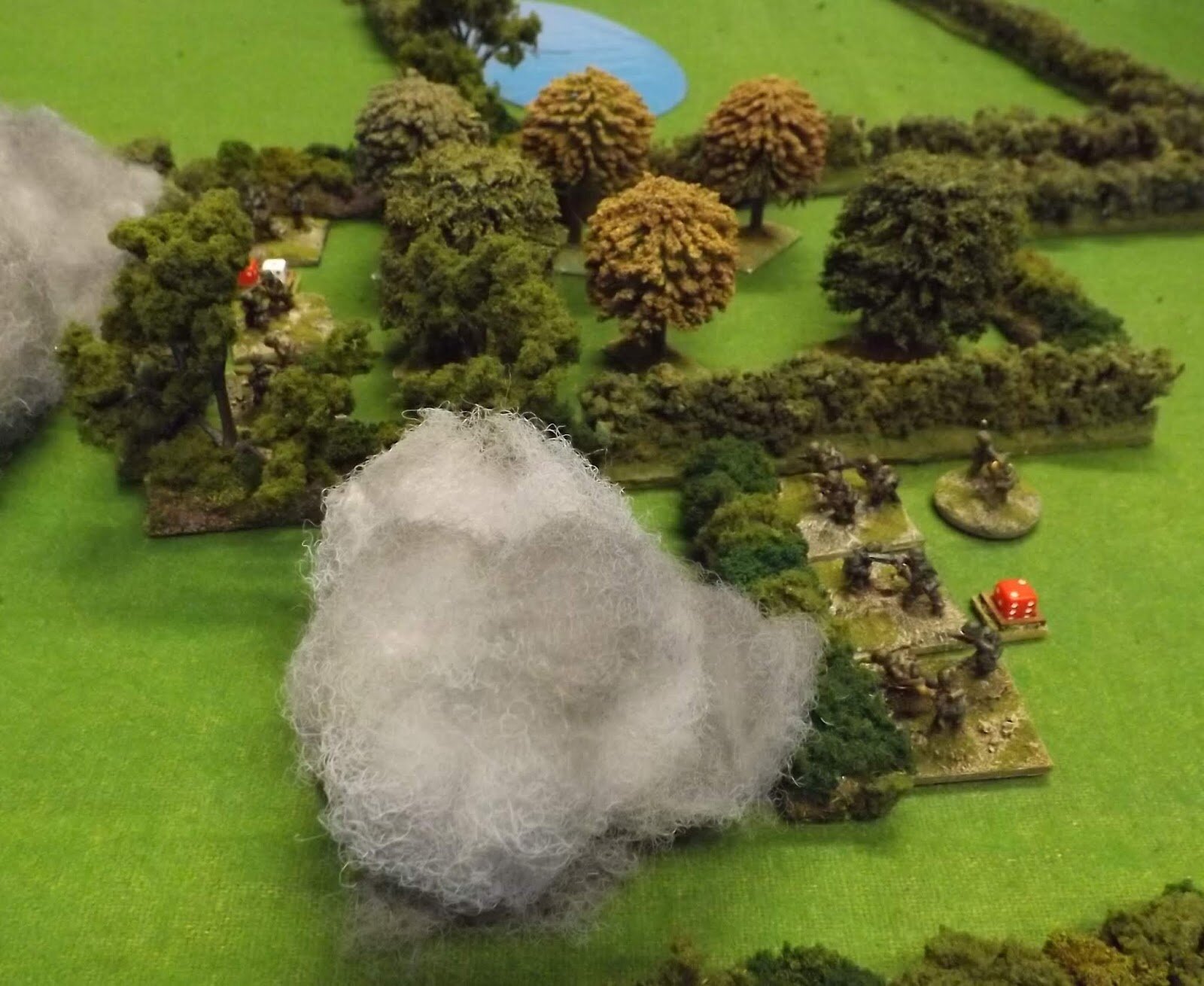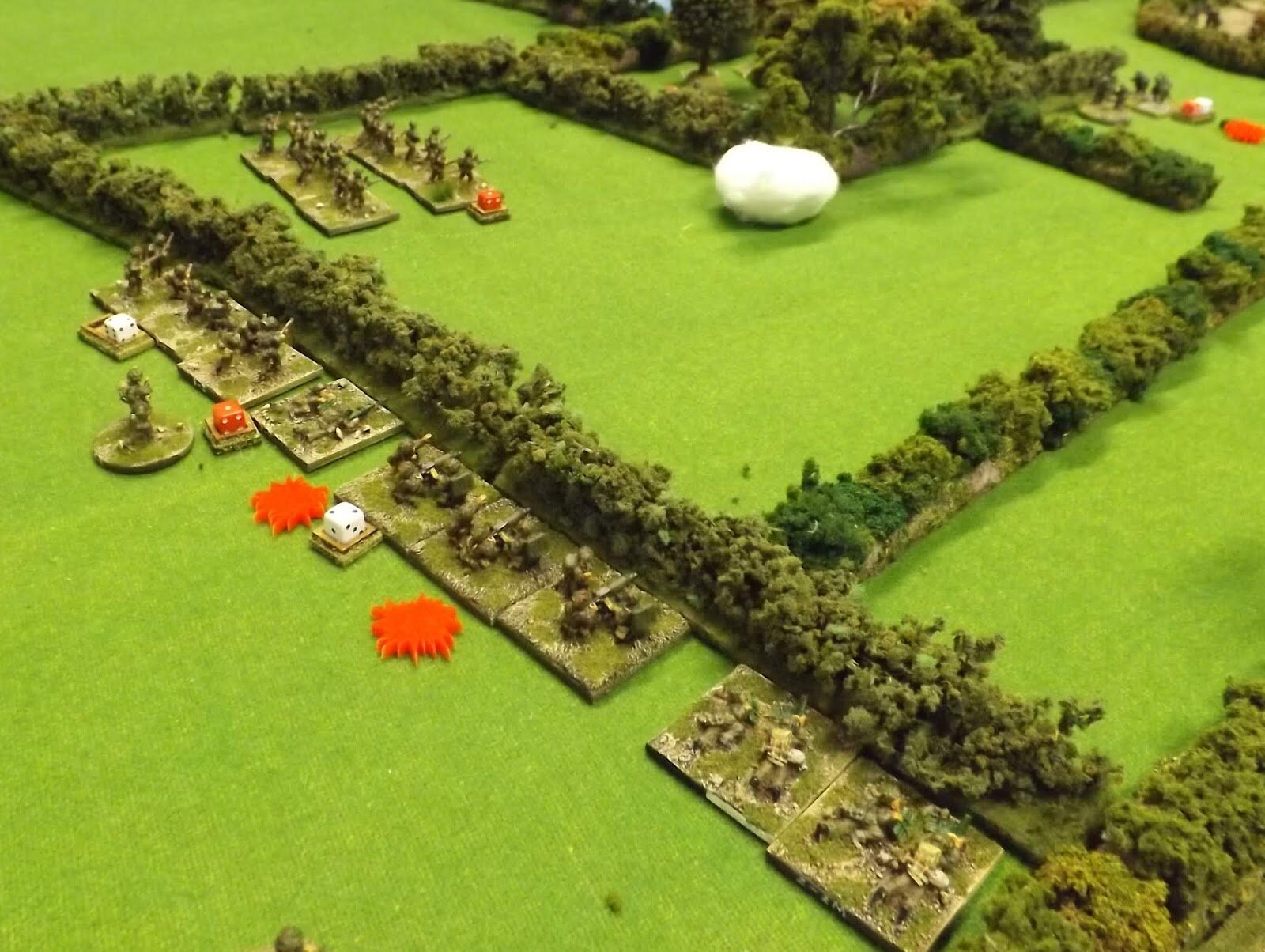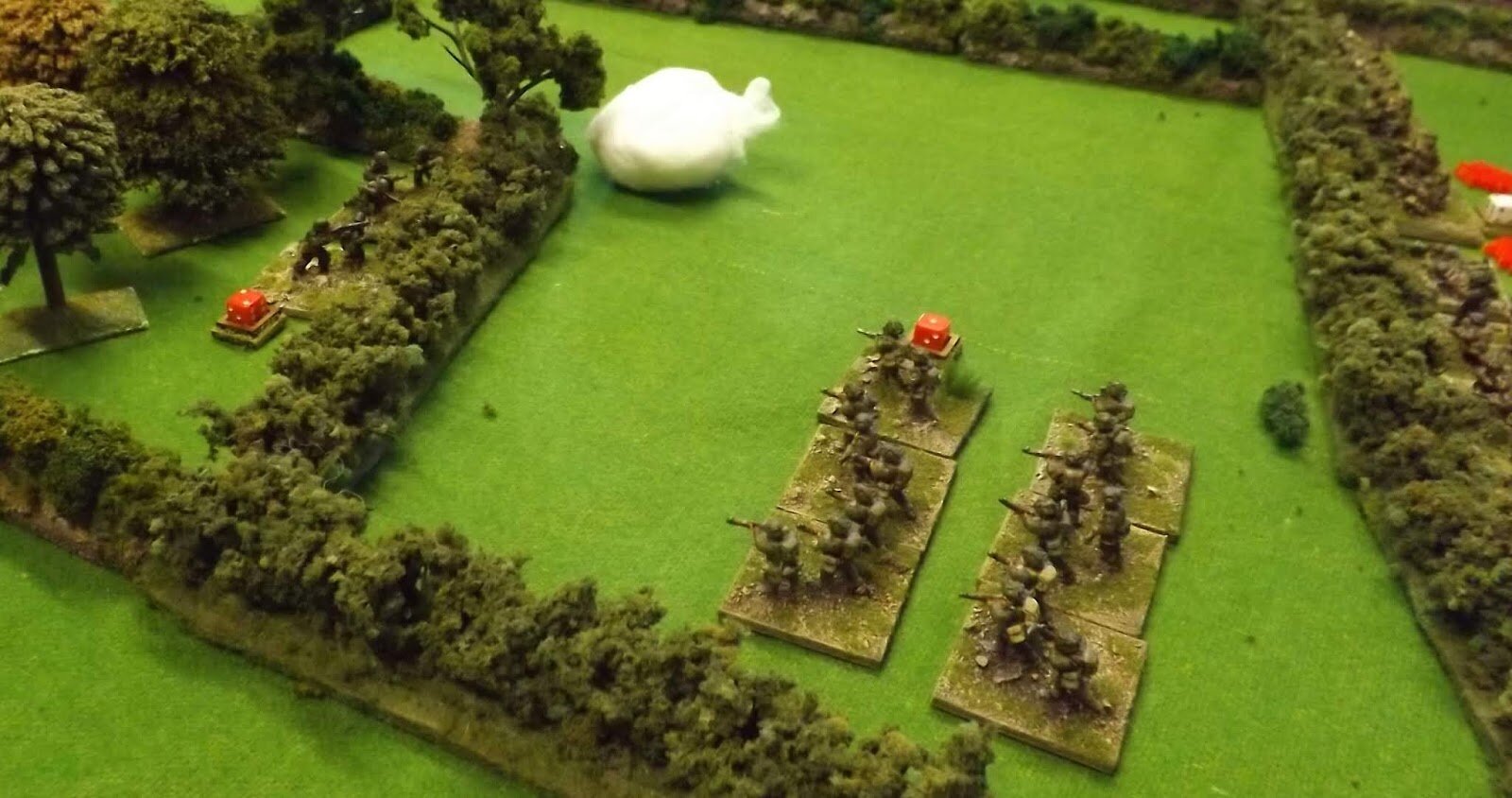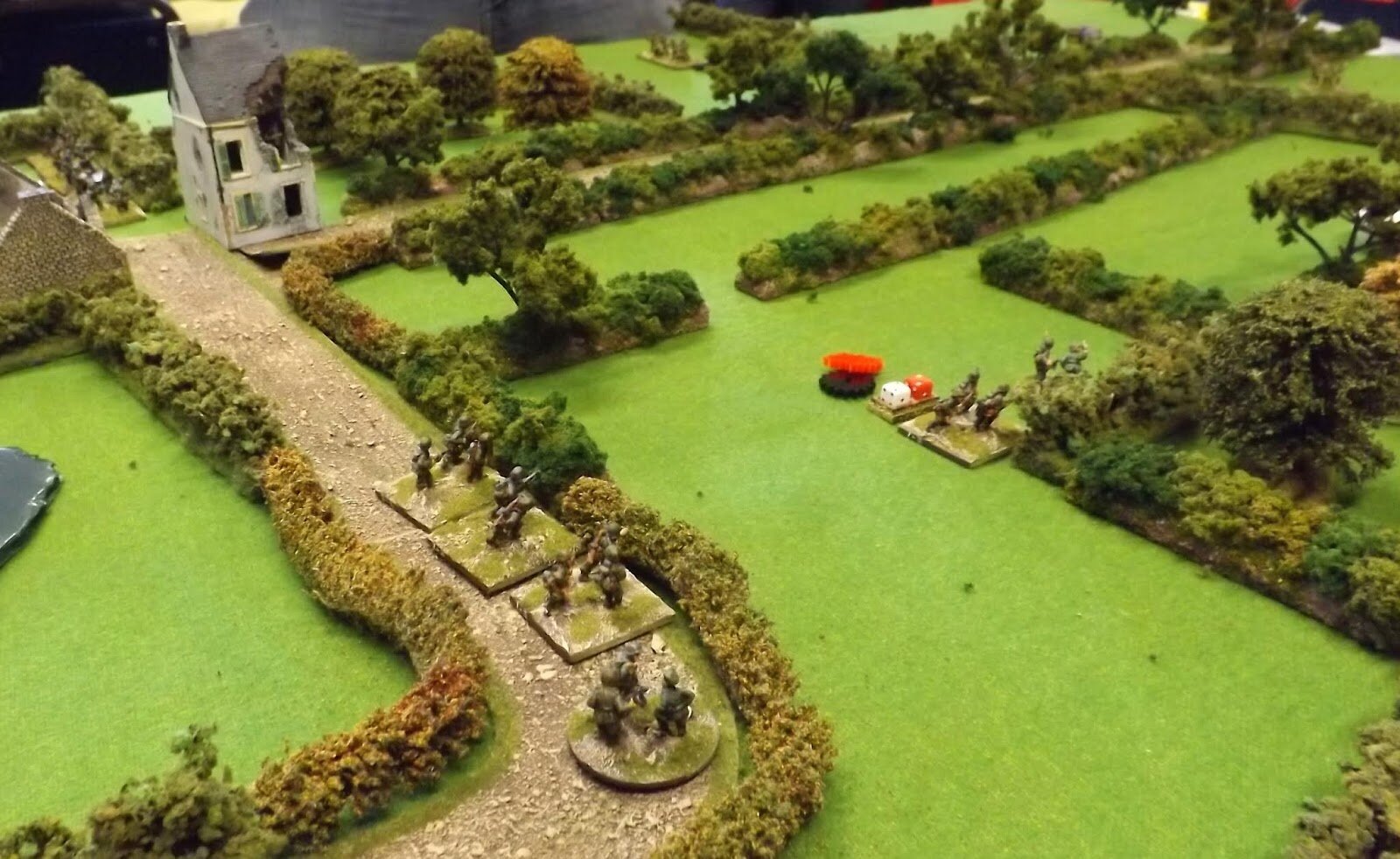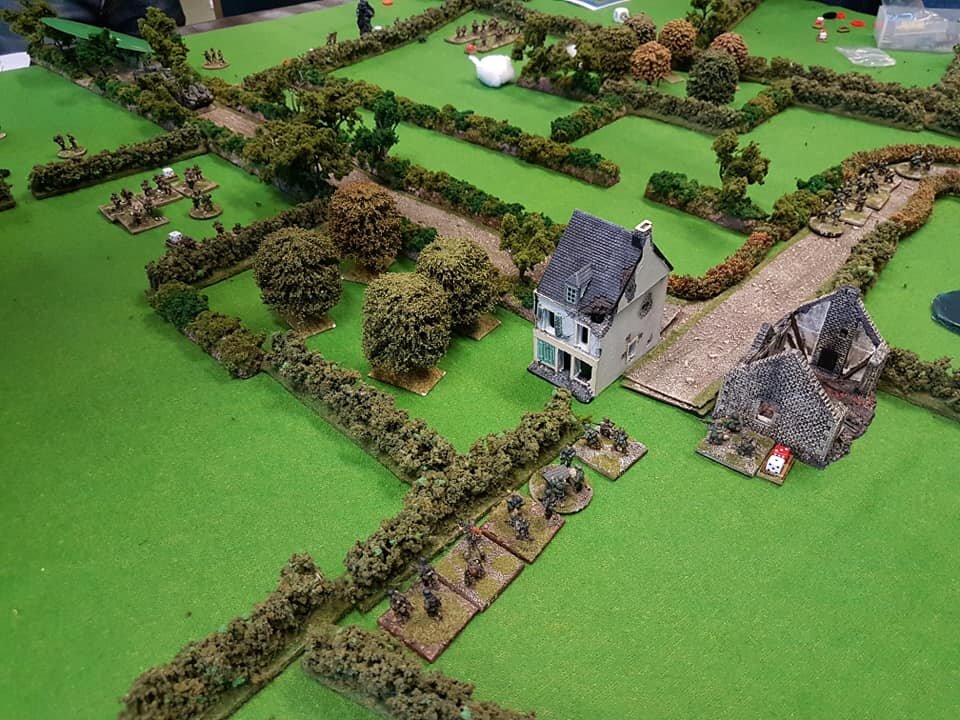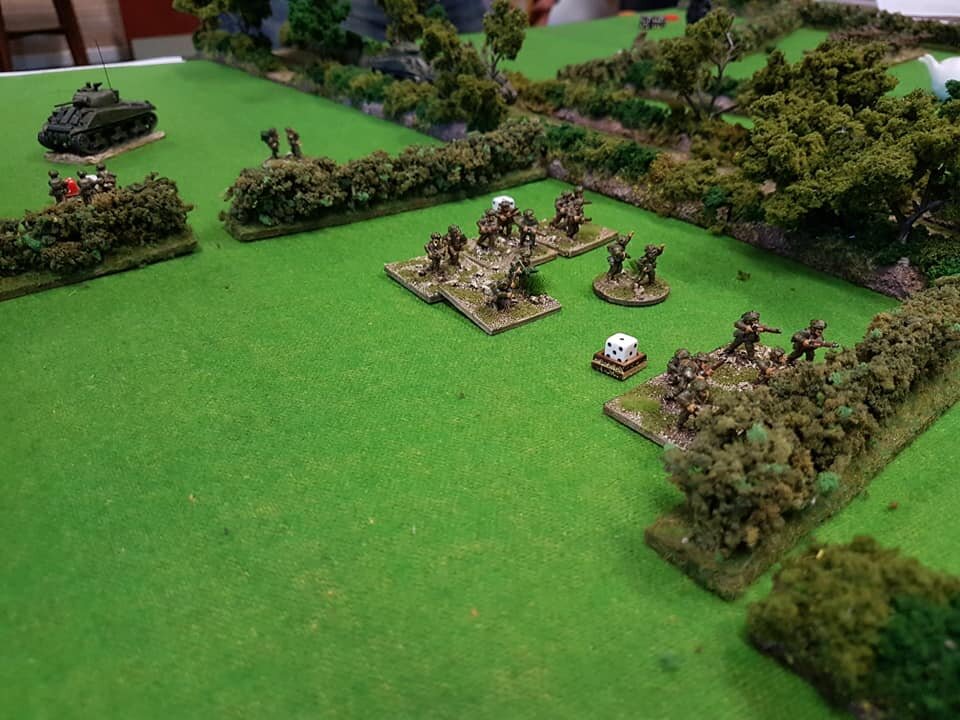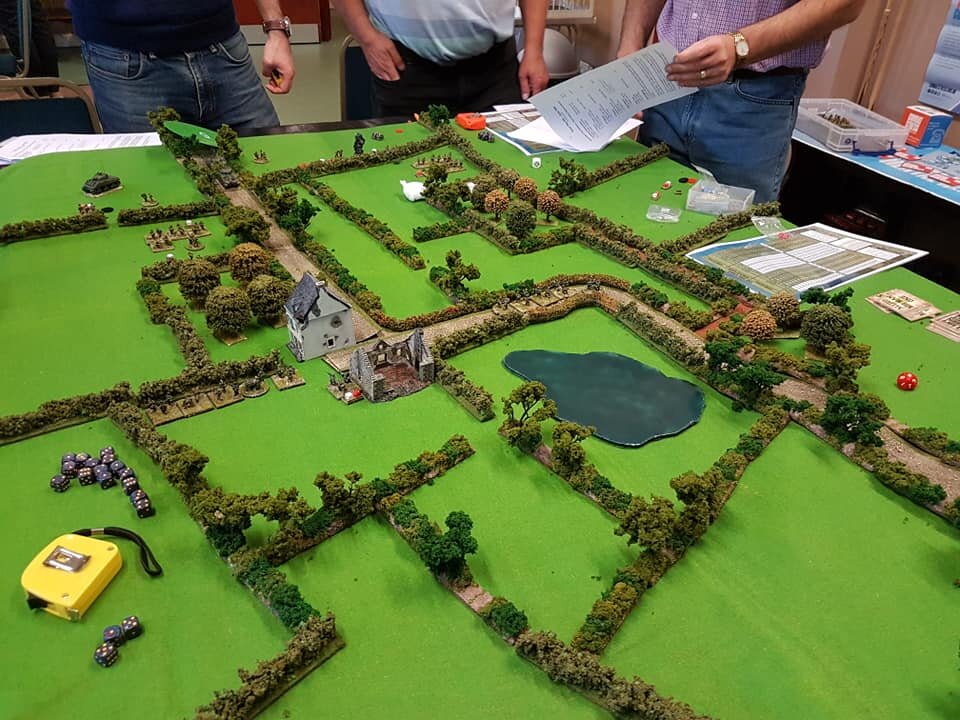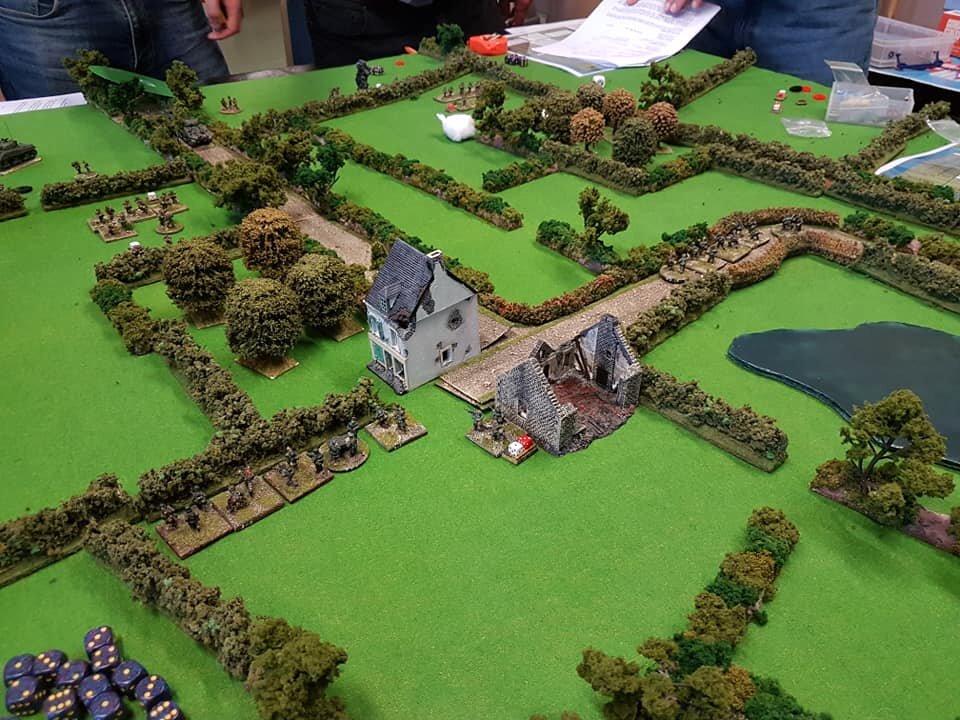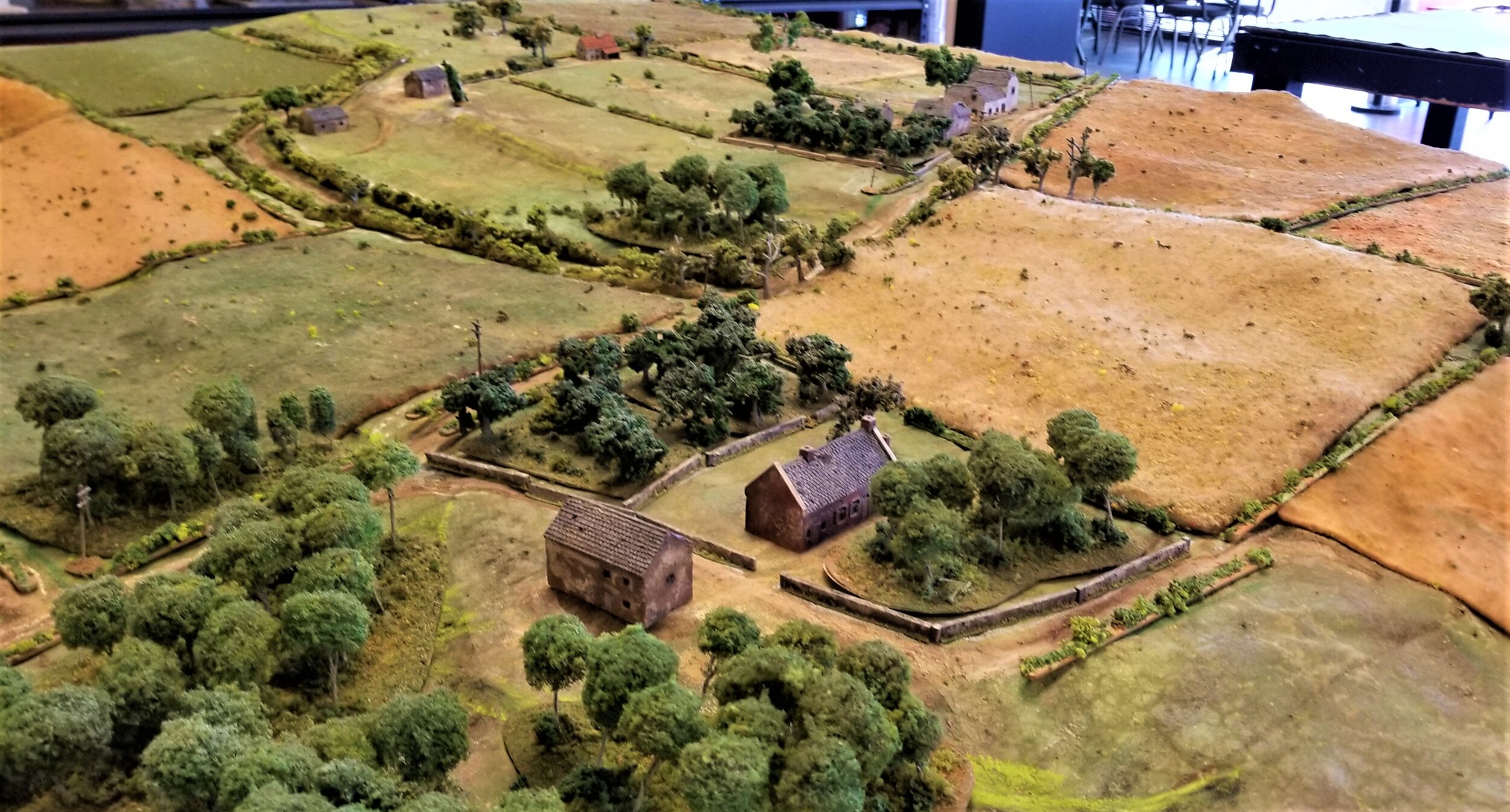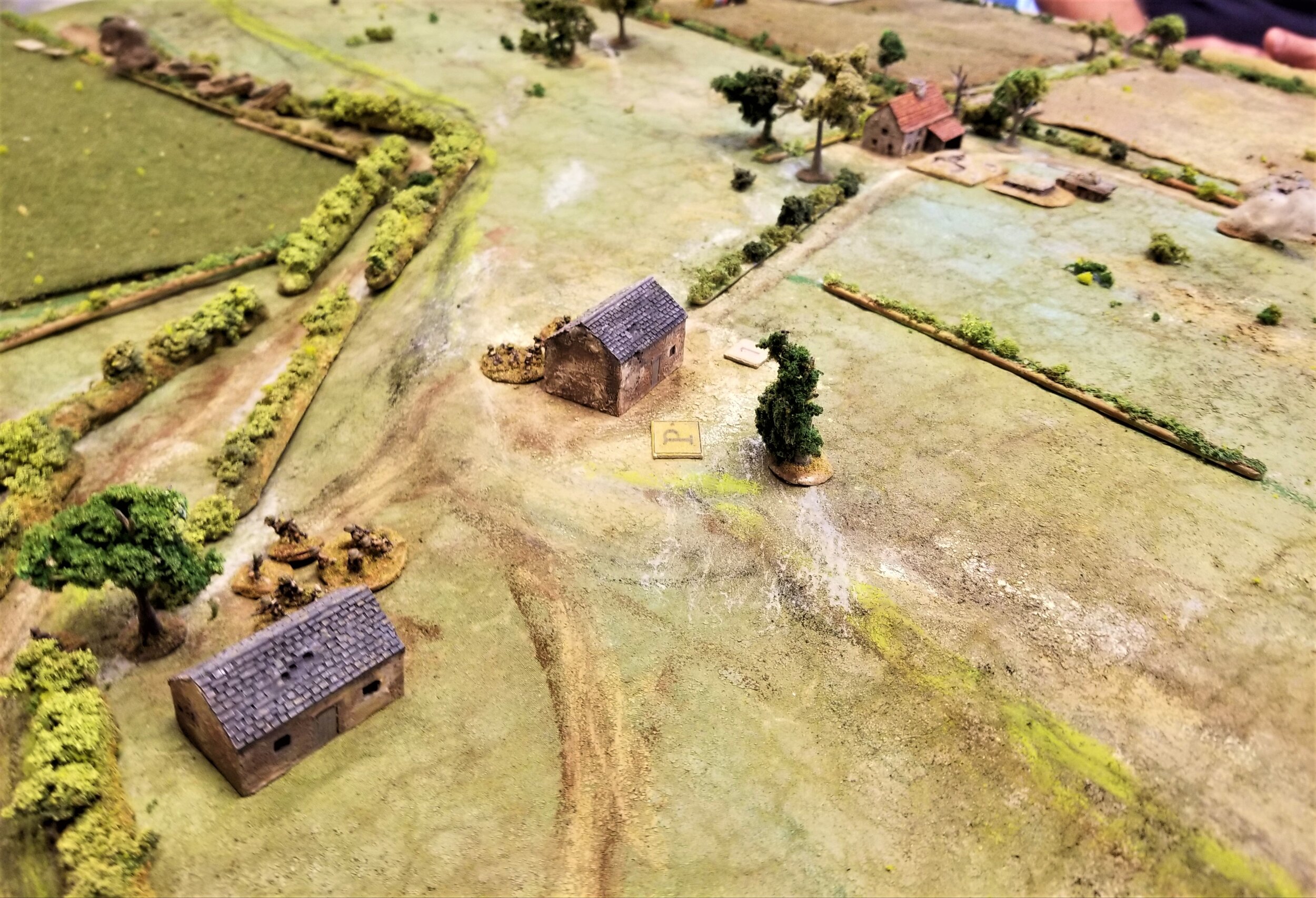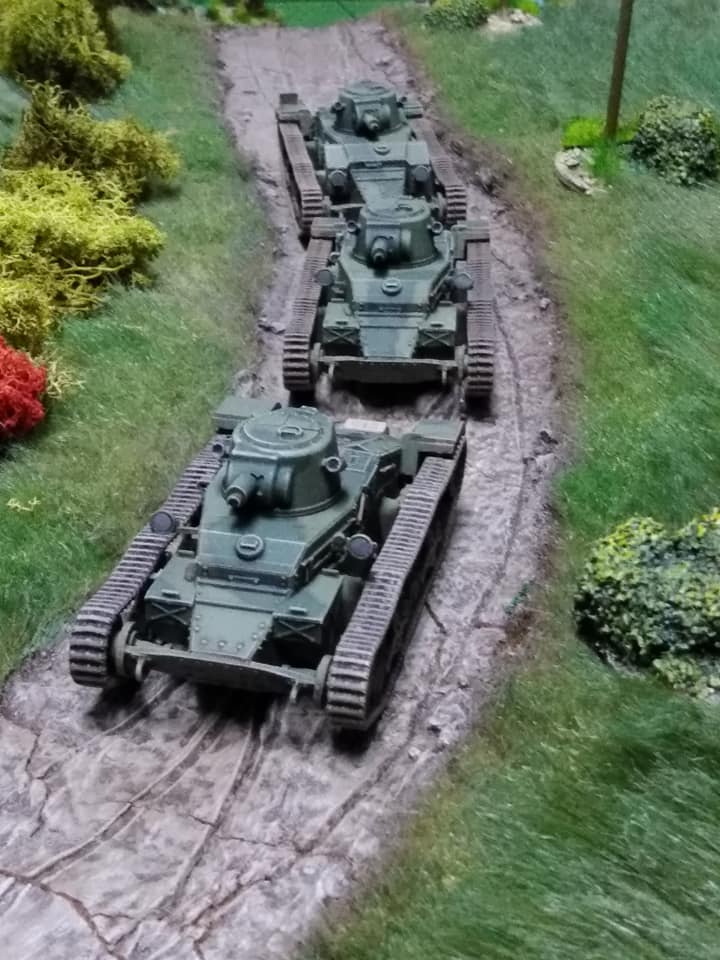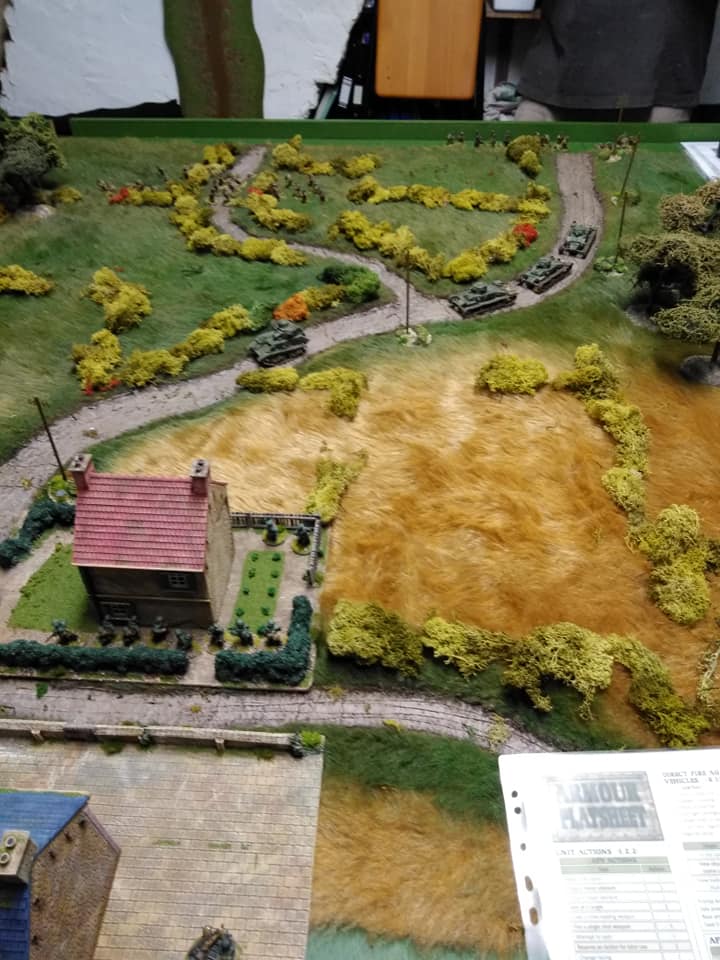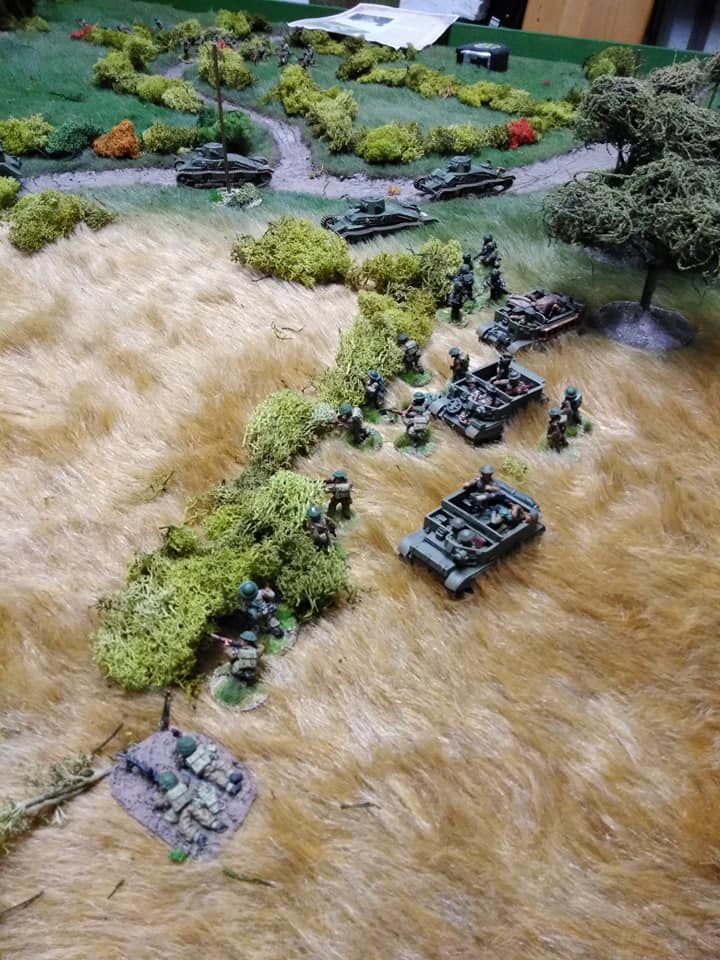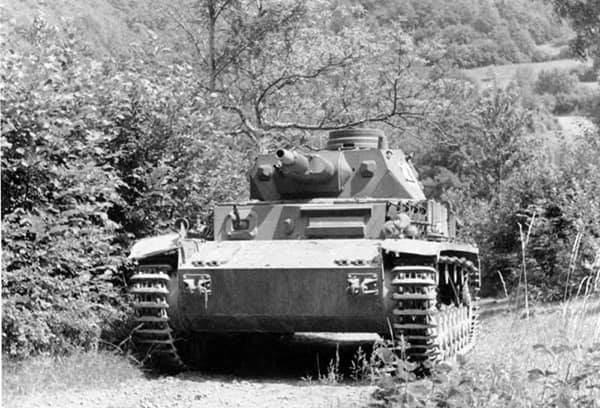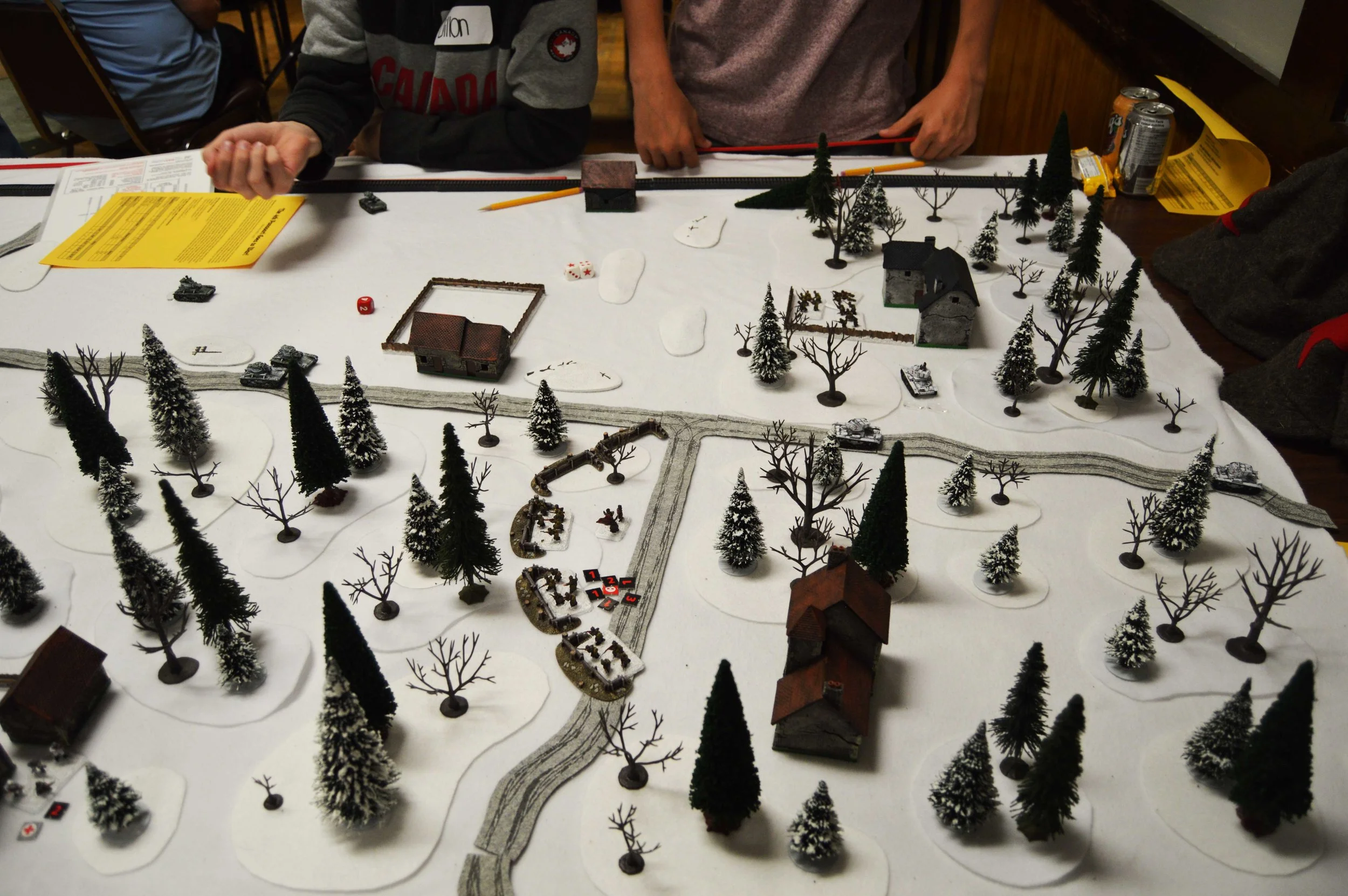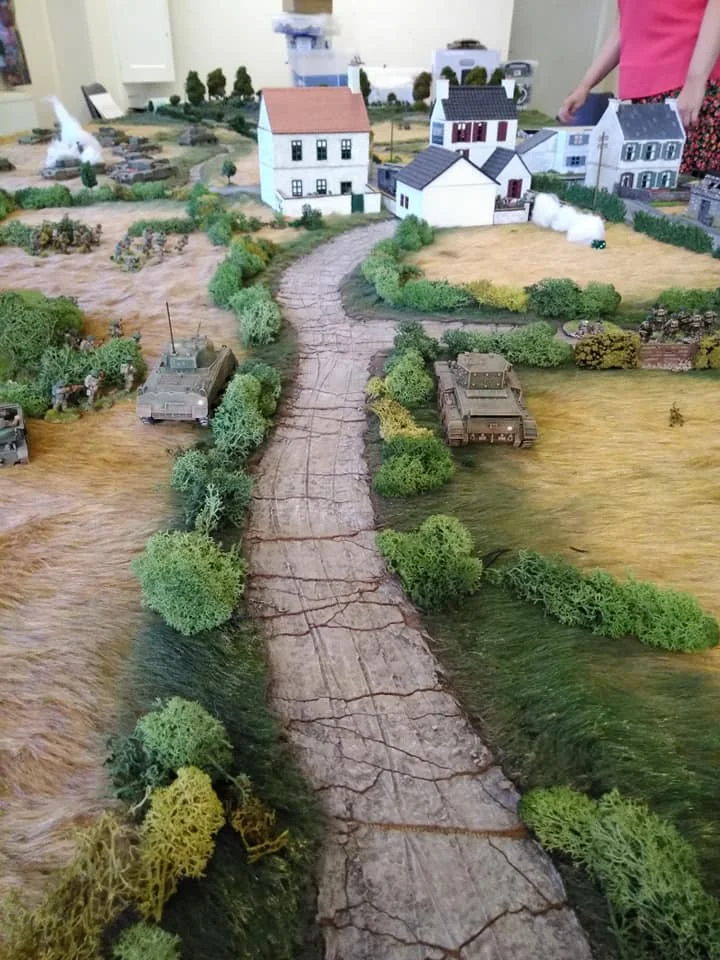Introduction
It is the night of the 5th of June at what had been a fairly insignificant crossroads in the village of Le Mer, some 5 miles North West of Carentan.
The tows of two gliders from the 101st Airborne, carrying a battery of 57mm Tank Destroyers ( towed 6pdrs to non-American readers), have overshot the drop zone and, being fired upon by AA, have been forced to loose their wards blindly. As it happens, the gliders land on our sleepy little village where, luckily for them, two platoons-worth of the 101st have also dropped nearby, and have started to converge on the sleepy little hamlet.
A platoon of 1058th Grenadier Regiment has been billeted in the village to protect a battery of anti-tank guns whose prime movers have broken down on the way to coast: left behind when the rest of their Company moved on to Carentan.
Neither side knows the other is there…
Background: The Germans
Lieutnant Shutlz stared angrily at the small glass of Cognac sitting on the makeshift table in the warehouse he had made his temporary headquarters in this shitty little hamlet of Le Mer: more aptly it should be called Le Merde, he thought. Famous or infamous for the factory that produced the awful looking bicycles everyone in the area rode.
The Cognac didn’t help his mood, he had risen from the ranks fighting in Russia and had never developed the taste for the stuff that his fellow officers had , it was only marginally better than the swill they called wine here. He was from Bavaria, now a good Bavarian Dunkel beer and you were talking. The Cognac’s only saving grace was it was alcoholic and you could get pissed quickly on it!
Why did he need to get pissed ?
His bloody Company Commander had left his platoon here to guard two shitty guns and their crews whose tow trucks had broken down. They’d all carried on to Carentan to deploy for the damn Allied Invasion!
Personally he didn’t know what the fuss was about: they could have France, bloody hole; they could keep Russia too. Why any self respecting German ever wanted to leave Bavaria, never mind Germany, eluded him!
To cap matters Private Dingler, or Private’s Dingler ,as he was always running off to take a leak, had run in from one of his 20 minute forays outside, (for a fag he’d said but the platoon knew better) had panickly shouted that he had a loud crash in the field to the wet of the Village, ‘Loud Crash’ he thought how anyone could hear anything over the noise of passing Allied Bombers , and the booms from their falling bombs!
To make matters worse he’d tried to contact Company HQ earlier in the night and found the Radio was on the Fritz ……again!!!!!
Probably a waste of time but he’d better deploy the platoon just in case, which was sure to increase his popularity with Sgt Muller!
Background: The Americans
SHIT SHIT SHIT SHITTY SHIT! was the 1st words that came to the mind of Sgt Dingler 101st Airborne. The only bright spot was the fact the two gliders bringing in his battery of 57mm guns had landed fairly safely, despite being released and abandoned by the bloody air Corp when they’d had a few flak guns shoot at them! Fairly being the term as the Lieut had been the only casualty, knocked unconscious on the ‘landing’.
So he was in command!!!!
He’d got the guns out of the Gliders and one of his gunners head off to reconitre the village he’d seen by a few window lights to the east of where they had landed, he guessed someone may have spotted or heard them crash!!!!
The only redeeming thing so far was another of his gunners had made contact with a couple of Riflemen from the 501st, who were part of a mixed platoon of guys coming in from the east of their position.

































